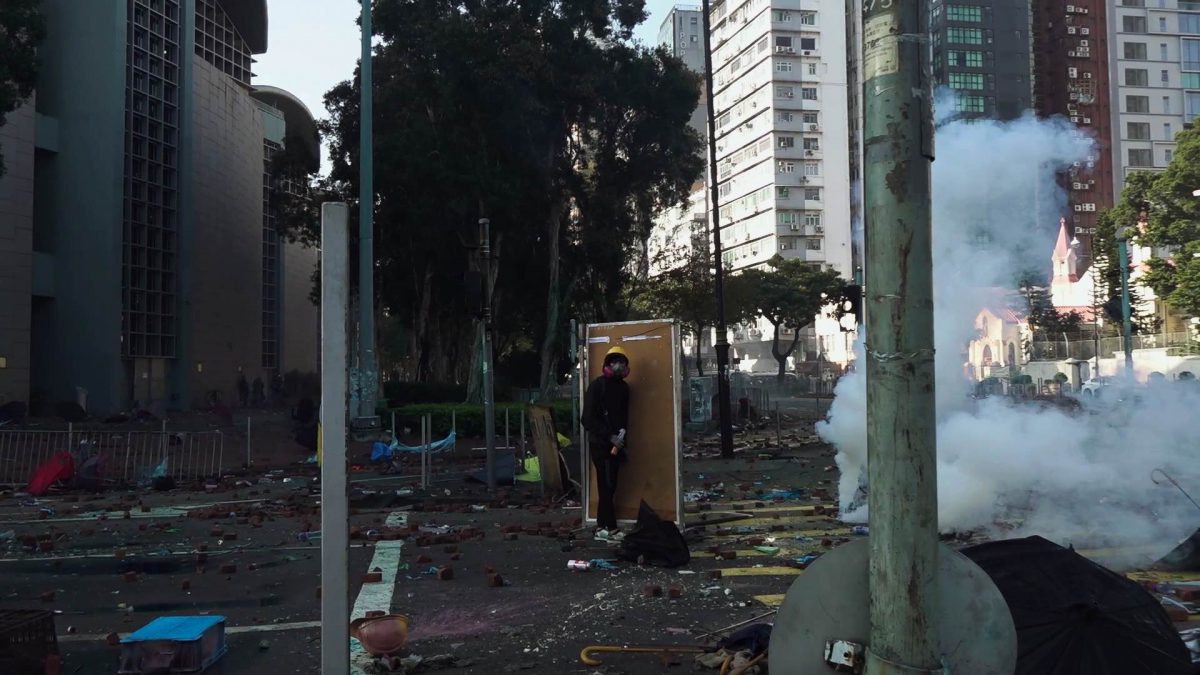Film Criticism Workshop
Behind Enemy Lines
Inside the Red Brick Wall by Hong Kong Documentary Filmmakers

Freedom fighters trapped inside an enclosed place for days struggle to find escape routes to avoid being sieged, caught, then arrested by state forces for rioting against the fascist Empire. For a documentary that actually documents real-world events for its entirety with no fiction in its skin, Inside the Red Brick Wall is more riveting than the typical Hollywood action or sci-fi dystopian movie.
The “freedom fighters” are the protesting Hong Kong people; the “fascist Empire” is China. The reason for the protests is the extradition bill that China imposed onto Hong Kong, violating the latter’s sovereignty. The Hong Kong people blocked public roads to protest this bill until they were crowded by the police and made to retreat inside a university. The setting is during the event called the Siege of the Polytechnic University of Hong Kong last November 2019 inside the university itself.
The drama is that hundreds of the protesters are trapped inside the university, and throughout the documentary, they must find ways to find an escape because of dwindling supplies and fears of arrest (or worse, of rape and death) from the police. Some climb down a bridge using rope, some go under sewers, some voluntarily surrender to the police. The last minutes see all the protesters concoct a final desperate grand chase away from the university, through the police, and towards sympathizers willing to help them. The film builds up to the carrying-out of this plan, but the documentary ends just as it starts to happen. We don’t see what comes next save for some text on the screen counting the number of total arrests and injuries.
The documentary consists of on-ground and first hand footage by journalists and participants from the side of the protesters. Because of the proximity, the danger is palpable. Anxiety is heavily felt. Emotions run high. Fully armored and fully armed police shoot their rubber bullets and water cannons at protesters with their makeshift gear and umbrellas used for shields. The Polytechnic University of Hong Kong is turned into a battlefield. Bodies litter the grounds, battered but never defeated in spirit. This is a war film. But this is real life. Which makes it journalism.
Journalism is frequently misconceived as needing to be unbiased. In reality, it has no such need, and part of the rigor of Inside the Red Brick Wall is that it unabashedly takes the side of the protesters. No time is wasted on presenting the side of the state. Nor should it be. The omission is partly pragmatic, since the documentarists are the protesters themselves, but the more important reason is that Inside the Red Brick Wall as a political documentary is the platform to air out sentiments repressed by the state. Traditional media is already peddling the popular narratives. Grassroots documentary filmmaking is the space allocated for subversion.
Another important facet of the documentary is that it is not the work of one filmmaker, but of multiple people. No singular person is named or given the sole credit. Collectivity trumps the personal—such is the organization for mass action that gets things done. This solidifies a movement that extends from the streets to film.
John Patrick Manio
